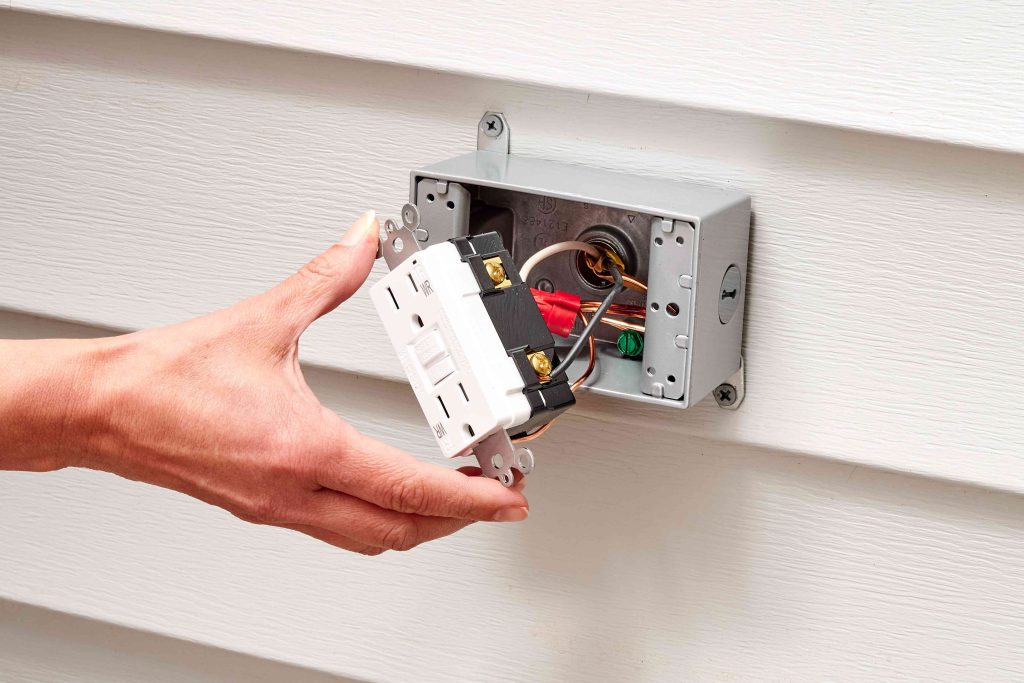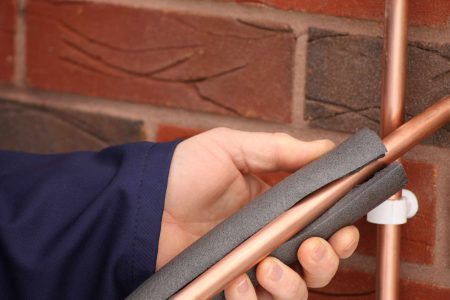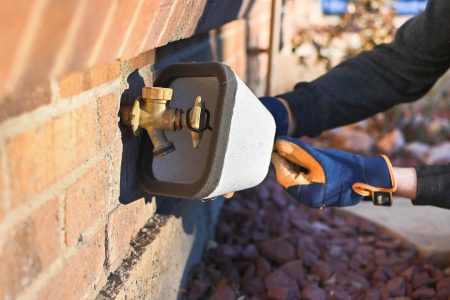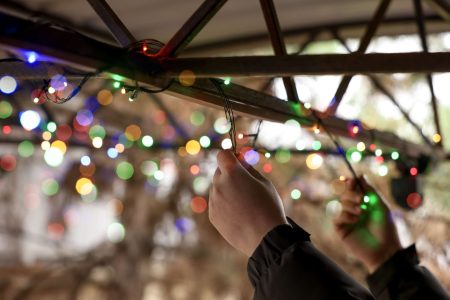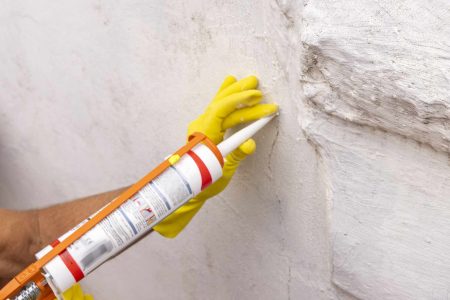Most homes have only a couple of outdoor outlets (electrical receptacles), but adding one can be easier than you might think. Instead of installing a new circuit for the outlet, you may be able to tap into an interior outlet on an existing circuit within the home. This is acceptable if the existing circuit can handle the additional power demand of the new outlet and it is a standard receptacle circuit. You cannot tap into bathroom or kitchen receptacle circuits or into dedicated circuits (those intended for a single appliance or other specific use).
The electrical box for the outdoor outlet must be waterproof and have a cover suitable for the location: If the outlet is protected from direct weather exposure, such as by a porch roof, it must have a weatherproof cover rated for damp locations; if the outlet is directly exposed to the weather and moisture, it must have an “in-use” cover rated for wet locations. Also, all outdoor outlets must have GFCI (ground-fault circuit-interrupter) protection. You can meet this requirement simply by installing a new GFCI outlet.
Note: The new circuit cable and GFCI receptacle must have the same amperage rating as the existing circuit. Use 12-gauge cable and a 20-amp receptacle for a 20-amp circuit; use 14-gauge cable and a 15-amp receptacle for a 15-amp circuit. (On residential installations, the National Electrical Code or NEC does allow 15-amp outlets to be used on 20-amp circuits.)
What You’ll Need
Equipment / Tools
- Non-contact voltage tester
- Screwdrivers
- Hammer Drill
- Long 1/4-inch drill bit
- 3/4-inch drill bit
- Metal coat hanger (as needed)
- Cable ripper
- Wire strippers
Materials
- NM-B 2-wire cable (14-gauge for a 15-amp circuit; 12-gauge for a 20-amp circuit)
- Cable clamps
- Wire connectors
- Weatherproof outdoor electrical box with an appropriate cover (for surface-mounted applications)
- Silicone caulk or exterior sealant
- Exterior screws
- GFCI receptacle
Instructions
-
Determine the Outlet Location
Identify an interior wall outlet in your home that corresponds to an outdoor location where a new outlet will be most useful. The existing outlet box is most likely fastened to a wall stud; the new outlet should be located on the same side of that stud, in the same stud cavity (space between neighboring studs). This prevents you from having to drill through a stud to run the new circuit cable.
-
Turn off the Power
Shut off the power to the existing receptacle circuit by turning off the appropriate circuit breaker in your home’s service panel (breaker box).
-
Test for Power
Check the outlet with a non-contact voltage tester to confirm that the power is off to the circuit, inserting the tester probe into each of the outlet slots. Remove the outlet’s cover plate and check all of the wires and outlet terminals for power, using the tester. The tester should indicate no voltage for everything in the electrical box.
-
Disconnect the Outlet
Loosen the mounting strap screws on the outlet and pull it out from the electrical box. Disconnect the circuit wires from the receptacle, and remove the receptacle, then bend the wires to the side and out of the way.
-
Remove the Box Knockout
Remove a knockout from the back of the box to expose the outer wall, if the box is metal. Pop out the knockout with a hammer and screwdriver. If the box is plastic, you should be able to use one of the existing openings in the box.
-
Drill a Hole to the Outside
Drill a hole through the wall from the interior side to the exterior side, using a drill and a long 1/4-inch-diameter drill bit. You can drill through the knockout hole in the box, if applicable. On the outside of the wall, enlarge the hole, drilling through the siding and sheathing only, using a 3/4-inch bit; this gives you a little more room to work with for the new wiring.
Alternatively, you can drill only a 3/4-inch hole on the outside of the wall (rather than drilling from both sides), aligning the hole with the interior box or locating it very near the box.
-
Install the Circuit Cable
Cut a length of NM-B cable to extend from one box to the other, plus at least 8 inches beyond both boxes. Feed the cable through the knockout of the indoor box and through the hole in the wall to the outside.
If you don’t have a knockout hole, or if the box locations are not aligned, fish the cable through the wall with a metal coat hanger bent into a hook, inserting the hook through the exterior hole to grab the cable from inside the wall cavity.
Secure the cable to the interior box using a push-in cable clamp or the internal clamp in the box, as applicable.
-
Prepare the Pigtail Wires
Cut a 6-inch length of cable from the cable roll (not the installed cable). Use a cable ripper to remove the outer sheathing from the piece of cable, and separate the three wires. Strip 3/4 inch of insulation from both ends of the black and white insulated wires, using wire strippers. The third wire is the bare copper ground wire. You will use these three wires as pigtails to connect the indoor receptacle to the circuit wires.
-
Install the Pigtails
Strip away about 6 inches of the outer sheathing on the interior end of the newly installed circuit cable. Strip 3/4 inch of insulation from the black and white insulated wires.
Join the black wire from the new circuit cable to the black wire from the existing circuit cable and the black pigtail wire, using an appropriately sized wire connector (wire nut). Do the same with the three white wires, then the three ground wires. If your box already contained two white wires and two black wires, you will join those with the new wires and the pigtails, too, joining a total of four white wires together and four black wires together.
Note: If you have a metal indoor box, there should be a grounding pigtail already attached to the box (all metal boxes must be grounded). Join this pigtail with the two circuit grounds and the new grounding pigtail, connecting all of them with a single wire connector. If there is no grounding pigtail in the box, cut an additional pigtail from the cable roll and connect it to the box’s ground screw and the other ground wires and pigtail.
-
Reinstall the Indoor Outlet
Wire the indoor outlet by connecting the bare copper ground pigtail to the ground screw terminal on the outlet. Connect the white (neutral) pigtail to one of the silver (neutral) terminals on the outlet. Connect the black (hot) pigtail to one of the brass (hot) terminals on the outlet.
Tuck the wires neatly into the electrical box and secure the outlet to the box with the original screws. Reattach the outlet’s cover plate.
-
Install the Outdoor Box
Remove one of the knockouts on the back of the outdoor electrical box. Feed the new circuit cable through the knockout hole, and secure the cable with a cable clamp. Apply a thick bead of silicone caulk or exterior sealant along the perimeter on the back side of the box. Mount the box to the wall with exterior screws.
-
Install the GFCI Outlet
Strip away about 6 inches of the outer sheathing from the circuit cable, and strip 3/4 inch of insulation from the black and white insulated wires.
Connect the bare copper ground wire to the green ground screw terminal on the GFCI outlet. Connect the white (neutral) wire to the silver (neutral) terminal marked “LINE” on the outlet. Connect the black (hot) wire to the brass (hot) terminal marked “LINE” on the outlet.
Tuck the wires neatly into the box and secure the outlet to the box using the provided screws. Install the outdoor box cover as directed by the manufacturer.
Note: If the outdoor box is metal, install two grounding pigtails, connecting one to the box and one to the ground screw on the GFCI outlet. Join the pigtails and the circuit ground wire with a wire connector.
-
Restore Power and Test the Outlets
Turn on the power to the circuit by switching on its breaker. Test both outlets for voltage, using the voltage tester. Also, test the TEST and RESET buttons on the GFCI outlet, as directed by the manufacturer.
Read the full article here



